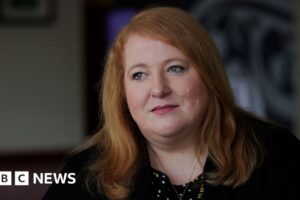
GCSE results day is an important day for every student thinking about further education
GCSE Results Day(Image: Nick Wilkinson/Birmingham Live)
Thousands of nervous students across the UK are anticipating the arrival of the dreaded exam results day next month. GCSE results day for 2025 is on Thursday, August 21. Schools will receive the results the day before, on Wednesday, August 20, and students can collect their results from their schools on the Thursday morning, typically starting around 8am.
In what is the first time it has ever happened, some students will receive their results via the Education Record app this year, with 95,000 students in Manchester and the West Midlands taking part in a pilot scheme ahead of a national rollout. The Education Record app will replace paper GCSE files to provide students with digital exam records they can use to apply for college, apprenticeships, or jobs.
GCSE results day is an important day for every student who collects them. The results heavily influence a student’s future educational and career paths. They determine whether a student can progress to A-levels, further education, or apprenticeships, and may even impact future university applications and career options.
If you are unable to collect your results in person because you are on holiday, or for any other reason, such as illness or being unable to travel to school, you can usually arrange in advance for your school to send your results to you via e-mail or post.
You can also nominate someone else to collect your results on your behalf, but you will usually need them to sign a letter and bring photo ID.
You can either open your results alone, with your family or with your friends. If you want to open your results with as few people around you as possible, go into school early. The shift to the numerical grading system was introduced in England in 2017 firstly in English language, English literature, and maths. By 2020 all subjects were shifted to number grades.
The grades are ranked from 1, the lowest, to 9, the highest. The bottom of grade 7 is aligned with the bottom of grade A, while the bottom of grade 4 is aligned to the bottom of grade C. The bottom of grade 1 is aligned to the bottom of grade G.
On GCSE results day, many students will discover they have not achieved the grades they need to go on to study at their planned education provider. Schools may assist these students by advising them to contact the school or college, and find out if they will still be accepted with their current grades.
The school or college may accept them anyway, or they may require the student to resit a GCSE. In a situation where a student has their offer withdrawn, the school may assist the student in contacting other providers to see if they have spaces.
Students may opt to resit any exam if they wish. However, it is a requirement for any student who receives a grade lower than a 4 in English or maths to retake the exam.
Every year, grade boundaries are set by individual exam boards in a process called “awarding”. The placing of the grade boundaries cannot be done until exams have been marked. Exam boards will share grade boundaries on results day.
The General Certificate of Secondary Education (GCSE) is an academic qualification in a range of subjects taken in England, Wales and Northern Ireland, having been introduced in September 1986 and its first exams taken in 1988.
Education site BBC Bitesize suggests bringing the following with you for results day:
A fully charged mobile phone to call your family to let them know your resultsPhoto ID, just in case you need itA bottle of water to stay hydratedA family member or trusted adult to give you supportA pen and piece of paper to write down any information.
Source





